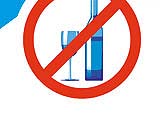In Russia, the process of organizing rehabilitation centers began, the conditions for the transition from purely medical to a medical and psychological and social model for helping with alcoholism are gradually being created. So, what is the difference between the new rehabilitation concept?
Content
In the center of the new rehabilitation concept is a patient with its numerous medical, psychological and social problems.
The interaction of psychiatrist-narcologist, psychotherapist, medical psychologist and social worker in the process of treatment and rehabilitation.
Brigade work method unites the efforts of specialists in the development and implementation of positive personal and social resources of patients.
This principle emphasizes the relationship of biological and psychosocial methods of working with patients. Methods aimed at restoring the health of patients and their return to the family and society.
Continuity involves a consistent transition from medical and psychological and further to psychosocial measures in the process of treatment and rehabilitation. Working with the patient begins in hospital conditions (hospital, office, day hospital, nightlife) and continues in rehabilitation centers, in therapeutic communities or in outpatient rehabilitation branches (cabinets).
This principle assumes long-term control over the psychophysical state and the social status of patients (at least 3-5 years). Patients with alcoholism stand on dispensary accounting in the regional narcological dispensary for 3 years.
In the first two years of remissions, the patient's condition remains unstable and is largely determined by disorders of memory and intelligence, a decrease in moral and ethical standards, organic lesion of the central nervous system, a violation of interaction with society, an increased tendency to antisocial actions, pronounced alcohol.
This principle involves close interaction of patients with various state, public and private structures.
Only in this case, their full support may be provided in the commercial. The latter includes the acquisition of profession, employment, study, receiving housing, pensions, legal protection.
The primary level of trust in the patient is based on conviction about the need to apply for medical care and confidence that doctors help, and diseases will be easier.
The secondary confidence level is determined by direct contacts with specific doctors, psychologists, social workers. Trust is determined by their appearance, to hold onto the manner, express their thoughts, speech culture, ethic behavior; The quality of the medical and rehabilitation environment (the material base of therapeutic or rehabilitation institution).
The tertiary level of confidence is determined by specific positive shifts in a patient's state: it disappears the symptoms of abstinence (abolition of alcohol), decreases the attraction to alcohol, improves well-being. The patient is learning to resist the disease, involved in normal human relations, study, work. The treatment-rehabilitation process becomes not only clear and important, but also effective.
As a rule, all three levels of trust are expressed at the recovery stages, however, in cases of exacerbation of the disease, especially with the resumption of thrust to alcohol, patients partially lose confidence in medicine capabilities.
The use of medical and psychosocial techniques, the brigade work method is possible only in the case of genuine partnership with the patient. Otherwise, positive results not only do not arise, but develops a completely opposite phenomenon - antagonism.
Cooperation can be sustainable and productive in the presence of fundamental conditions as: 1) a sufficiently high motivation of patients to participate in treatment and rehabilitation, 2) high qualification of personnel and compliance with the principle «Brigadality», 3) High Quality Medical Rehabilitation Environment.
Psychological support groups include: «AA» - Anonymous alcoholics, «Al-Anon» - Relatives of alcoholics, «Alatin» - Children of alcoholics.
This principle is very important, as it contributes to the formation among patients with active assistants to the process of rehabilitation. Persons who are in a state of stable remission are a certain standard for patients demonstrating the reality of recovery. They are trusted, they are readily advised to them, but at the same time check the strength of their remission and the level of their social adaptation.
The authority of consultants is earned with great difficulty, abstinence from alcohol is «Cost». Many consultants are permanently held in this status and acquire persistent «immunity» against recurrences.
The psychotherapeutic and psychocorrection work with family members of patients and other significant persons helping to normalize relations inside the family, to prevent the disease recurrence, to stabilize the social status of the disease, to stabilize the social status of patients to normalize relations within the family.
The treatment and rehabilitation system must be open and accessible to everyone who wants to get rid of their illness.
Mass media, trust phones provide the public, sick and their relatives with real information on the effectiveness of treatment and rehabilitation, new technologies and on the way of returning patients to society.
«Basics of legislation on the protection of citizens» (1993) eliminated discrimination against alcoholism patients, which are equalized in rights with all other patients.
They have the right to receive information about their health, the right to voluntarily consent to medical intervention and the refusal of it, to preserve the mystery of the diagnosis, on the use of law enforcement services (lawyer, judges), to create public associations to solve drug problems. Strategy of openness, democratic, legitimacy helps to increase the effectiveness of treatment.
It is based on identifying specific biological, psychological and social characteristics of the patient, from which its internal resources depend on one side, and factors provoking the recurrence of the disease - on the other hand.
These features include: the presence of concomitant diseases, the type of personality and the characteristics of the nature of the patient, the specifics of his family. Knowledge of these features will allow in many respects to improve the quality of treatment and rehabilitation and avoid recurrence of the disease.
Also read:










